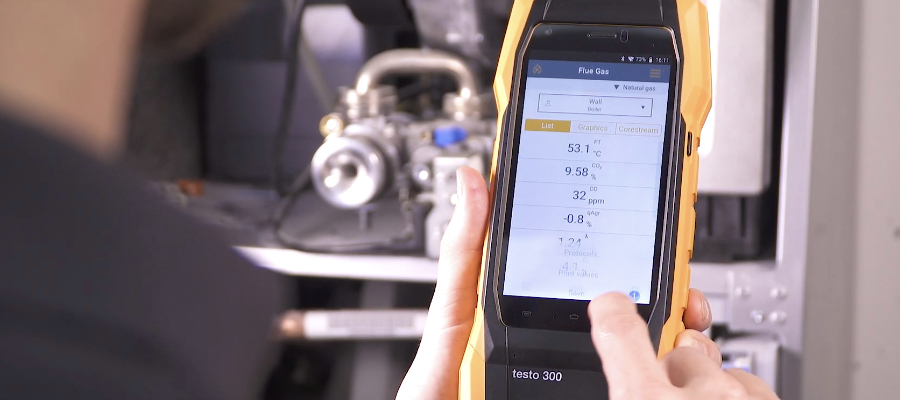
Want to save some brass? Can’t afford to be without your analyser for days on end?
Well we've got you - here are five tips that will save you money on costly repairs and prolong the life of your kit.
1 Moisture
Tip: Avoid it. At all costs ⛔
How?
- Moisture is a by-product of combustion and your analyser will trap it on purpose, stopping it affecting your flue gas test results. Make a habit of emptying your analyser water trap regularly. Think of it as a nappy. Consider your daily routine and maybe tie this in with packing up your kit at the end of the day, or after each use?
- Imagine it’s winter. Fancy sleeping in your van overnight? Didn’t think so. Neither will your analyser. Condensation WILL form inside your device when being moved from the cold to warmer environments. You won’t see it, but trust us, it’s there.
- Bonus: cuddling up to your analyser at night also lowers the chances of it being nicked!
(Disclaimer: Test Meter accept no responsibility for grievances caused by introducing a third partner into your bedroom)
Conclusion: Water ingress and theft are both subjects to avoid. Change your analyser’s nappy (sorry, water trap) after each use, or at least daily. Avoid leaving your analyser in your van overnight.
2 Purging
Tip: Get ready for The Purge... No, not like the film, fortunately this process is far less disturbing.
How?
- When you test an appliance, noxious gases are pulled into your analyser that pass over the sensors, providing you with a test result. Some of these gases remain in the analyser after the test has finished, causing considerable corrosion damage, so it makes perfect sense to purge your analyser in the fresh air before packing it away.
- Remember though, ONLY purge your analyser in fresh air.
Conclusion: Fresh air is good! Let your analyser purge after each appliance test.
3 Filters
Tip: Help your analyser breathe.
How?
- If you’ve had the flu (no pun intended), you’ll know the feeling of finding it hard to breathe, with your lungs full of who knows what. So if the filters in your kit are visually full of soot, dirt and soggy condensate, make sure you replace them. Your analyser will not measure accurately otherwise.
Conclusion: Filters are ten a penny. Buy some and keep them to hand.
4 Clean
Tip: Put your pinny on and keep up!
How?
- Clean your analyser. It’s that simple. Those wipes you use for your hands will do. They’re kind and gentle on your hands, and they’ll be kind and gentle on your kit too. Clean any grime/soot off your analyser and get rid of any bits of metal attracted to the magnet on the back. Your customer will appreciate you avoiding scratching their appliances, and you won’t look like a 1920’s chimney sweep from the big smoke.
Conclusion: Clean your analyser when you empty its water trap. Two birds/one stone and all that!
5 Good Practice
Tip: We’re not going to teach you to suck eggs - without doubt you know your trade better than anyone - but being mindful of these best-practice tips will keep your analyser happy, and your pockets that little bit deeper. Have a beer on us!
How?
- There are some real basics that it's easy to forget about but genuinely do make a difference.
- Not to sound like your mum, but for once, "would you please just use your eyes!" Check your analyser’s probes and hoses. Damaged hoses and probes will cause incorrect readings. Look for splits and wear.
- Hang your hose and probe up after use - any residue condensate should drain out easily avoiding damage to your analyser.
- Use the correct charger for your analyser. Universal after-market chargers will likely have the incorrect voltage/current output and could fry your device.
- Your probe comes first and last. Connect the probe to your analyser before switching it on, and then leave it connected until it powers down after the purging process.
- Some appliances create high levels of CO when firing which could royally stuff the CO sensor inside your analyser. Only insert the probe into the flue once the boiler has fired up.
- When measuring, make sure you take your reading from the centre of the flue - ie the hottest area. This will give you the most accurate reading, but you’ll also avoid touching the flue wall (where most condensation builds).
Conclusion: Try and follow these best-practice tips. You’ll probably have learned them at college, but if not, you’ll save a few quid in the long-run.
6 Visit www.test-meter.co.uk
Tip: Alright, I said five tips, but this bonus one is mutually beneficial. You scratch our backs and we’ll scratch yours!
How?
- If you’re shopping for a new analyser, spares, or if you need calibration/repair, please contact us, take a look online, or give us a bell (0113 248 99 66).
- We’ve got hundreds of items in stock for delivery by noon the very next working day and we're happy to offer customers advice, helping guide them towards the ideal product to suit their needs.
- If you’re local to us, chances are we may be able to calibrate your analyser while you wait in your van and have a brew ☕ Be sure to check ahead with our service team first though, or I’ll get a ticking-off... call 0113 248 99 66 - option 2.
- If you’re not local, we can arrange collection, calibration and return to you - the whole process typically takes around 2 days.
Conclusion: If you think we’ve helped, you’ve learned something, or maybe if we’ve just given you a chuckle, please like / share these tips on your social media accounts and don't forget to follow our pages for more in future!
